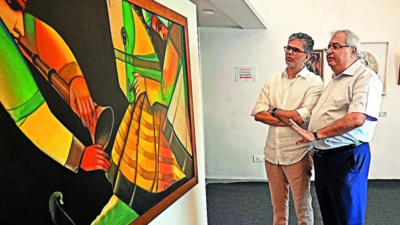
In India, art isn't something you go looking for. It's everywhere. In the intricate carvings of temple pillars, the delicate embroidery on a grandmother's sari, the bold colours of a truck's painted bumper, the everyday rangoli at someone's doorstep.
This deeply entrenched consciousness of art and aesthetics in the objects we use and the spaces we inhabit in daily Indian life made for enriching conversations at the launch of the
Art of India
's (AOI) fourth edition at Mumbai's NCPA on Sunday where artists, collectors, and connoisseurs came together to celebrate the very idea that art isn't separate from life itself.
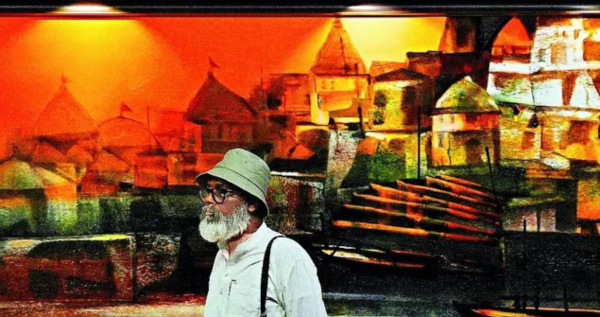
"Aesthetics have been part of our civilization forever," said industrialist Ajay Piramal, tracing India's artistic roots back to the Vedas. "It's in the way we dress, the way we design our homes, in our temples, and even in the way we celebrate. It's there in our music, dance, sculpture. The Samaveda talks about it. The first Raag Bhairavi is said to have come straight from the mouth of Lord Shiva. There are hundreds of objects dedicated solely to dressing up a woman-foot scrubbers, combs, intricately designed mirrors. Even in a simple Indian wedding, one sees the appreciation of art and beauty." Yet, somewhere along the way, he feels we started looking outward for artistic inspiration instead of valuing our heritage. However, he sees hope in the govt's new education policy that includes aesthetic literacy as a key component.
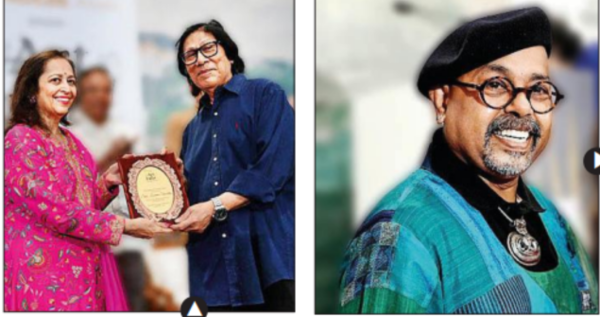
Swati Piramal, vice chairperson of Piramal Group, felicitates artists Laxman Shreshtha (left) and Paresh Maity (right) for their lifelong contributions to art
For author Shobhaa De, art has always been about connection. "Coming from a middle-class Maharashtrian family, I've always felt that Mumbai lives with art," she said. "We don't have to go to a museum to find it. Even something as simple as a rangoli made at home every morning is an act of artistic creation. It's how we pass down an awareness of aesthetics to the next generation."
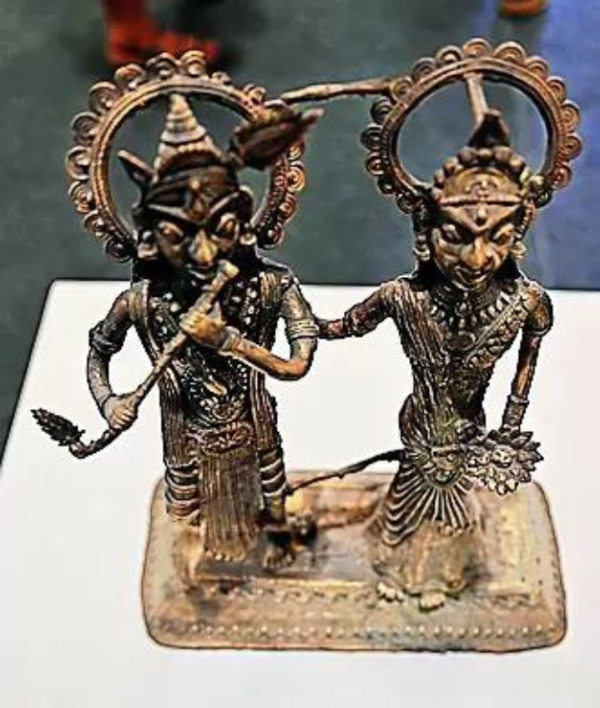
De recounted her first modest brush with collecting her first piece of art. "I couldn't afford an original so I bought a high-quality print of Amrita Sher-Gil's 'Three Girls' from Lalit Kala Akademi. It cost just a few hundred rupees, but it's been with me for over five decades. Now, my grandchildren look at it and that's how appreciation for art grows, by living with it."
Beyond the personal, Sabyasachi Mukherjee, director general of CSMVS museum, dwelled on how art shapes the soul of a city, too. "At a recent museum reopening, Maharashtra chief minister (Devendra Fadnavis) said something that resonated - the greatness of a city isn't measured by its tall buildings or how many rich people live there but by its cultural heritage. That's what we need to understand and open up discussions on how cultural institutions can contribute."
Beyond the speeches, even the art showcased at the event curated with both thought and skill by Alka Pande kickstarted interesting conversations on sustainability, development and the need to give India's folk and tribal the pride of place it deserves in the
Indian art
pantheon. While masters like F N Souza, Arpana Caur and J Swaminathan got their due, AOI also cast the spotlight on some hidden gems like the dying art of kaavi, a mural art form found across the Konkan coast. For the show, artist Janardhan Rao Havanje had transported the geometric and floral art form usually found on limestone walls to a canvas. His kaavi Krishna with earthy reds and indigo highlighted the beauty of the art form. "Besides painting, I also document and restore kaavi art. As buildings are demolished, there are very few sites that remain. So the attempt is to persuade people to preserve and restore them," says the Udupi-based artist who is deeply passionate about the cause. Lalitha Krishnan, potter and debutante sculptor from Ranikhet, is equally committed to a different cause - that of capturing humanity's impact on the environment. "My sculpture of the Himalayan grey langur is inspired by the langurs that come to my garden to feed on my fruit trees. Their numbers are dwindling every day," says Krishnan. From Krishnan's leaping langurs to Bandana Jain's eco-friendly horses made with recycled cardboard, Indian artists are clearly keen to inspire change through art.
As artist Nabibakhsh Mansoori whose oil on canvas 'When The Seasons Change' is on display at AOI, put it, "Politics divides people but art brings them together. This space compels society to think differently," said Mansoori, who sees art as more than just expression but a way to centre oneself. "The more creative minds come together, and the more people appreciate art, the calmer their minds will be. It's a form of meditation."
.png)
 German (DE)
German (DE)  English (US)
English (US)  Spanish (ES)
Spanish (ES)  French (FR)
French (FR)  Hindi (IN)
Hindi (IN)  Italian (IT)
Italian (IT)  Russian (RU)
Russian (RU)  6 days ago
12
6 days ago
12







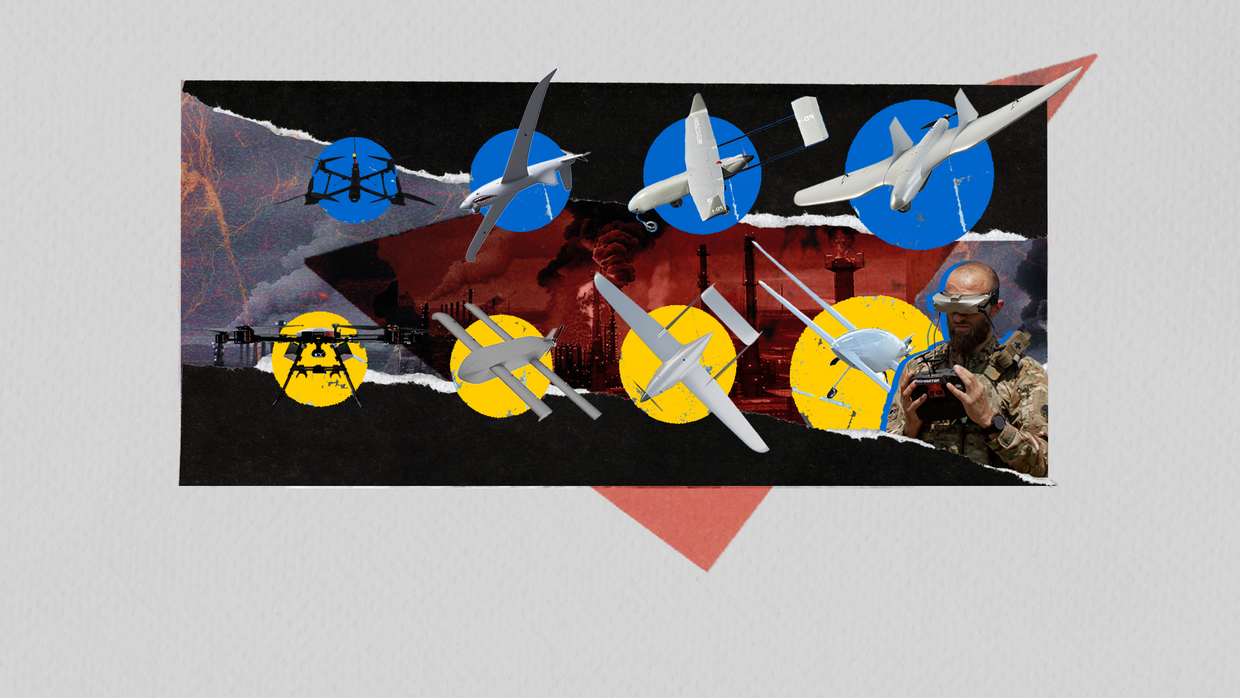

Comments